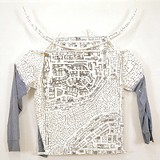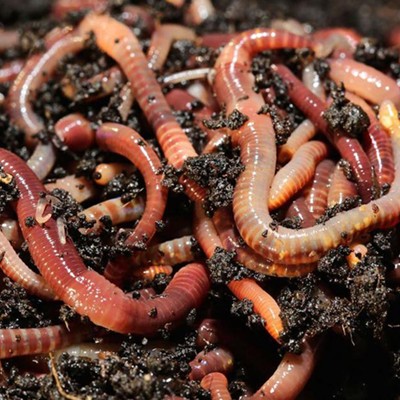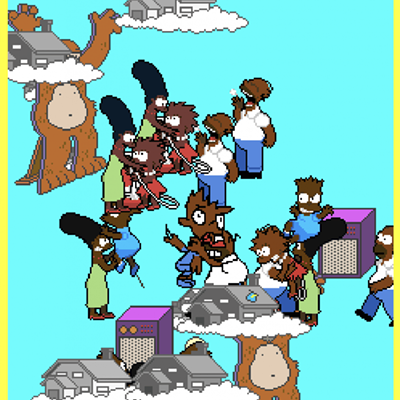[
{
"name": "500x250 Ad",
"insertPoint": "5",
"component": "15667920",
"parentWrapperClass": "",
"requiredCountToDisplay": "1"
}
]
Art
We should consider ourselves quite fortunate that Kim Jones, an artist internationally recognized for his performance art, installations, sculpture, and drawings, is having his first full retrospective practically right in our own backyard.
The California-born Jones came of age as a young man, as an artist, during the crucial coalescence of the Southern California performance and conceptual art movements of the 1970s. Not only had artists already been playing with alternative, non-traditional media, such as felt, nylon, rope, and foam rubber (Barry Le Va, Richard Tuttle, Eva Hesse, Bruce Nauman), but also assemblage art had likewise come into its own. And in California, the "last stand" for the American Dream in the post-World War II economic boom, assemblage art was created by individuals who didn't share, or felt alienated from, the middle-class values of their parents. However, as pointed out by Sandra Starr, director of the James Corcoran Gallery in Santa Monica, "Assemblage was the only art form that consistently reminds us of the processes that brought it into being, as the use of real objects and materials of daily life evokes the activities we ... [pursue] in order to live."
Enter the work of Jones, who brings to the bright, white modernist space of a university art gallery a selection of works chronicling his use and reuse of objects and motifs --- an ongoing act that ultimately produces a series of interconnections between all his various artistic emanations. For starters, when you first enter the gallery, you encounter a large, dirty but clearly tangible vestige of an early body-based performance, a sculptural "contraption," if you will, that enabled Jones to become his alter ego, Mudman.
Mudman evolved from Jones' earlier stick sculptures that were tightly wrapped with nylon, rope, electrical tape, and foam rubber, materials that would become a kind of "signature" for Jones. Often nearly nude and covered in mud, Jones attached to his back this latticed appendage of sticks, added a headdress and nylon (as in pantyhose) mask, and then went out walking the streets of Los Angeles, Santa Monica, and Venice, California. (When he moved to New York City in 1982, he continued to appear as Mudman, showing up not just in the streets but also in galleries, museums, and subways.) Jones became a walking sculpture.
Anongoing timeline features photo documentation showing Jones in situ, as it were. Among the photographs are images of Jones while in Vietnam --- a young Marine, sometimes shirtless, often very muddy. The allusions to camouflaged soldiers, peasants on pilgrimage, or even the homeless are not accidental.
Over the past 30 or so years as an artist, Jones has developed a personal language comprised of biomorphic forms and hybrid creatures. Much of this language as imagery has come about through his reuse of actual materials and motifs. For example, "Untitled #9" (2002) is a color photograph taken of Jones as Mudman sitting, waiting on a New York City subway platform to which the artist has added ink and acrylic line drawings as if they were emanating from the figure itself. The boundaries between media, between temporal divisions, have blurred, so much so that it is typical for Jones to be constantly reworking the surface, to change the objects and drawings in his possession. Indeed, his tendency to "revisit" his own works of art is not only evident in their titles, where dates can range from the 1970s to the present, but is also quite literal: after New York art gallery Exit Art bought one of Jones' works, five years later the artist asked if he could come back and draw on it. (The gallery ownership allowed it.) It should thus come as no surprise that Jones sees his work as a "form of process art because it's always changing."
The notion of ceaseless transformation is perhaps best --- and most obsessively --- illustrated in the "War Drawings." Here is a 35-foot high, floor-to-ceiling pencil drawing of a battlefield map covering three walls and depicting x-men and dot-men forever battling against one another while maneuvering men and equipment. Included in the massive drawing is a fortress, a church, streets and walls...it's like mapping an archaeological site, complete with pentimenti or erased lines, like a ghost image of an attack. Even the artist admitted that the more he worked on it, the more complex it got. "I'm like Zeus, a minor Zeus...and these are my rules," he says.
Jones' work is remarkably consistent. And it's not just because we recognize subjects and/or materials, but also the thematic layers, the motifs, whether the violence of war, the pain of confinement, or trauma and ritual remembrance --- all very powerful and timely.
Kim Jones: A Retrospective, through December 17 | UB Art Gallery at the University of Buffalo, Center for the Arts, Buffalo | Tuesday-Saturday 11 a.m.-5 p.m., Thursday until 7 p.m. | (716) 645-6912, www.artgallery.buffalo.edu.
Latest in Art
More by Alex Miokovic
-
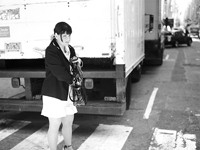
Larry Merrill at M. Early Gallery
Dec 6, 2006 -
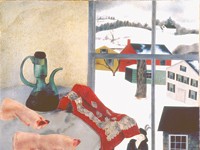
"My America" at the MAG
Nov 8, 2006 -
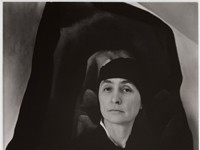
"Georgia O'Keeffe: Color and Conservation"
Oct 4, 2006 - More »
More by Heidi Nickisher
-

Larry Merrill at M. Early Gallery
Dec 6, 2006 -

"My America" at the MAG
Nov 8, 2006 -

"Georgia O'Keeffe: Color and Conservation"
Oct 4, 2006 - More »
